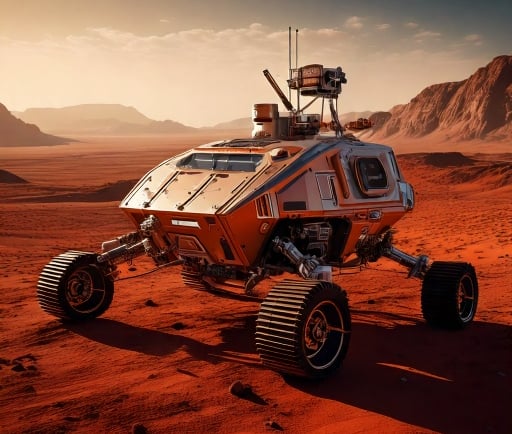The ExoMars Program: The Rosalind Franklin Rover


Introduction to the ExoMars Program
The quest to explore Mars has seen remarkable advancements in recent years, particularly through international collaborations aimed at unveiling the mysteries of the Red Planet. One of the flagship missions under this initiative is the ExoMars program, spearheaded by the European Space Agency (ESA) and the Russian space agency Roscosmos. This ambitious program aims to search for signs of past life on Mars, assess the planet's habitability, and provide valuable insights into its geology.
The Rosalind Franklin Rover: A Closer Look
At the heart of the ExoMars program is the Rosalind Franklin rover, named after the prolific scientist known for her pivotal contributions to understanding the molecular structures of DNA. This rover represents a significant leap forward in planetary exploration technology and science. Equipped with cutting-edge instruments, the Rosalind Franklin rover is designed to analyze the Martian soil and rock samples in search of organic compounds, which are critical indicators of past biological activity.
Scientific Objectives and Future Prospects
The primary objective of the Rosalind Franklin rover is to drill beneath the Martian surface, reaching depths of up to two meters. This capability will allow the rover to explore areas that are less exposed to harsh environmental conditions, thereby making it more probable to find preserved organic materials. By investigating these subterranean layers, scientists hope to gather evidence on whether microbial life could have existed in Mars' past.
Additionally, the Rosalind Franklin rover incorporates advanced technologies, including a suite of scientific instruments such as a panoramic camera and a mass spectrometer, which will provide detailed analyses of the Martian environment. The data collected will not only enhance our understanding of Mars but also inform future manned missions to the planet.
The ExoMars mission exemplifies the collaborative efforts among various nations to expand our comprehension of extraterrestrial life and planetary formation. As we await the launch of Rosalind Franklin, the anticipation builds for the groundbreaking discoveries that lie ahead, with hopes that this mission will unveil reasons for Mars' climatic shifts and past geological activities.
In conclusion, the Rosalind Franklin rover is more than just a technological marvel; it is a beacon of scientific inquiry that stands at the forefront of Mars exploration. Through the ExoMars program, we are poised to deepen our understanding of the Solar System and potentially find clues that could answer profound questions about life beyond Earth.
